Here’s more about the 6th Strategic Energy Plan
Thermal power generation to be decarbonized while ensuring a stable supply of electricity
(in provisional translation)
(English ver.) 2023-01-27
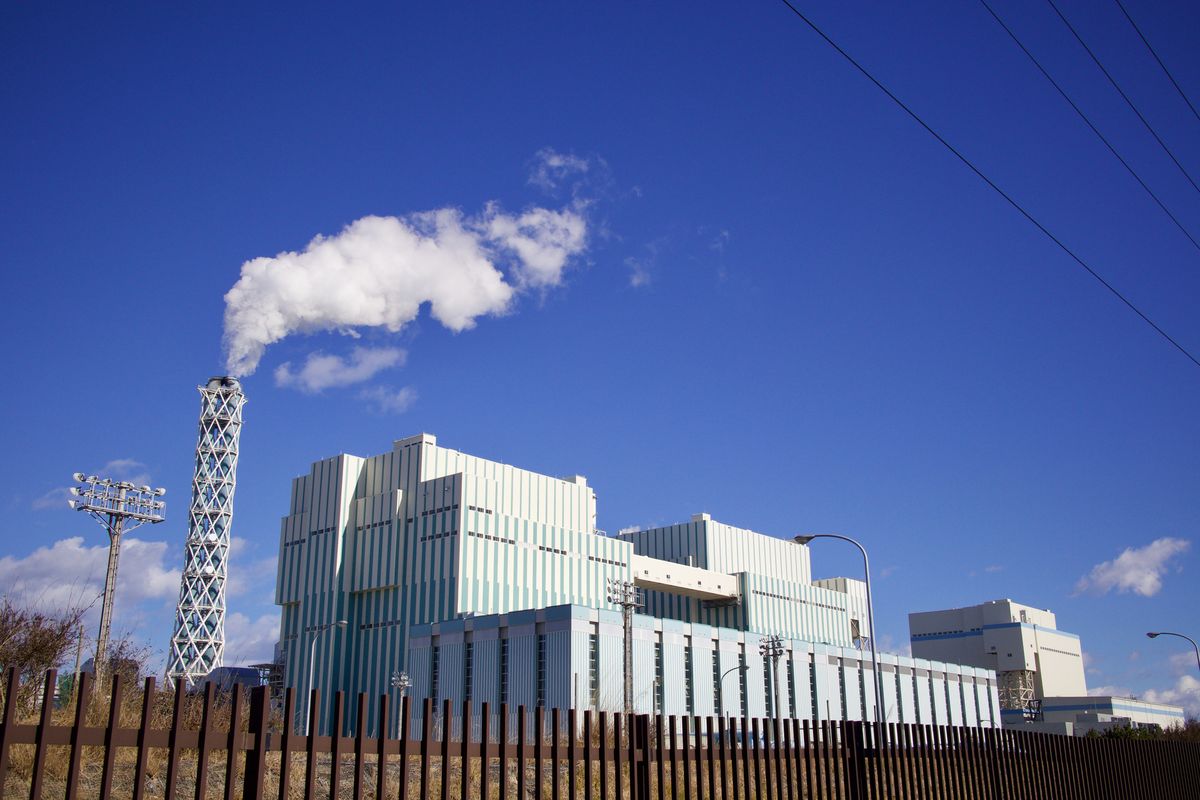
Hitachinaka Thermal Power Station
On October 22, 2021, the Government of Japan published the 6th Strategic Energy Plan to show the direction of Japan’s energy policy. It explains our climate-related efforts to overcome challenges toward achieving carbon neutrality by 2050. It also covers policies to solve various issues in relation to the energy supply/demand structure of Japan. From the many topics covered by the 6th Strategic Energy Plan, this article focuses on policies on thermal power generation toward reducing CO2 emissions while ensuring a stable supply of electricity.
The ratio of coal-fired power generation to be reduced substantially
Thermal power generation has long been supporting industry and the people’s lives in Japan. It has contributed to a stable supply of electricity as an important power source. It also helped enhance Japan’s power system’s resilience to natural disasters. In recent years, it has been playing an important role in balancing the supply and demand of electricity with a large volume of renewable energy being introduced. Thermal power compensates for the fluctuations in output class="aCenter"from renewable energy such as solar power and wind power that are dependent on natural conditions.
On the other hand, thermal power, particularly coal-fired thermal power, emits a large amount of CO2, posing a challenge toward achieving carbon neutrality by 2050. Therefore, efforts must be made to decarbonize it toward substantially zero CO2 emissions.
The 6th Strategic Energy Plan clearly states that the 32% ratio of coal-fired power generation in the energy mix of electric power generation will be reduced to 19% in FY2030. This is an even loftier goal than 26% shown in the Long-term Forecast of Energy Supply and Demand formulated in 2015. Going forward, strenuous efforts must be made to achieve this goal.
Current power generation structure vs. new energy mix

Let us look at potential paths to this goal in detail.
How will thermal power generation be curbed?
Japan’s basic energy policy is referred to as S + 3E, which means that on the major premise of Safety, Energy security is to be ensured (increasing the self-sufficiency ratio for a stable supply,) while pursuing Economic efficiency (low costs) and Environmental protection (reduced CO2 emissions.)
Toward achieving carbon neutrality by 2050, the following actions need to be taken:
- Reducing thermal power that uses fossil fuels such as coal, promoting maximum introduction of renewable energy that emits no CO2, and advancing the restart of nuclear power plants on the major premise of safety
- Replacing the existing thermal power plants with a decarbonized type that emits substantially zero CO2 by utilizing technologies such as CCUS* and carbon Recycling, and CO2-free fuels such as ammonia and hydrogen
*CCUS: Carbon dioxide Capture, Utilization and Storage, a technology to capture CO2 from emissions, store it deep underground or reuse it
However, it is unrealistic to eliminate thermal power immediately. It not only has a large supply capability, accounting for more than 70% of the power mix. It also has supply flexibility which renewable energy or nuclear power cannot provide. Although technologies to utilize ammonia and hydrogen are being developed toward future commercialization, these fuels alone cannot supply a substantial part of the electricity demand at this stage. Immediate restrictions on the output from thermal power would jeopardize a stable supply of electricity.
In order to plan a phased reduction of thermal power generation, it is necessary to build a well-balanced portfolio for fuels. Oil, coal, and natural gas are used for thermal power generation, among which natural gas emits the least amount of CO2. However, a heavy dependence on natural gas would cause another problem as seen in the international situation surrounding Ukraine. Risks are coming to light in heavy reliance on one country for natural gas supply. Japan, being a country with limited natural resources, needs to build a well-balanced portfolio to determine what fuel it should use at what ratio, taking into account the characteristics of each fuel.
Characteristics of each fuel
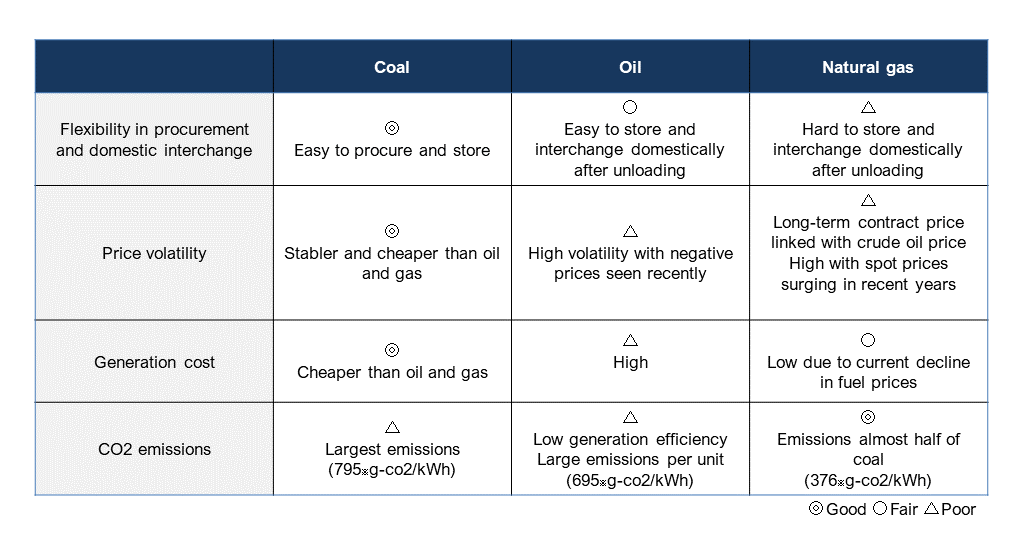
Points to consider for each fuel in formulating such a portfolio are outlined below:
Oil
Operations of oil-fired thermal power plants are being steadily suspended or discontinued. As a result, the ratio of oil in the current power source mix is as small as 7%. On the other hand, oil-fired thermal power is utilized during peak months in summer and winter.
Coal
Coal is easy to procure and store. However, it emits the highest levels of CO2 among these fuels, posing challenges in terms of environmental protection. Therefore, it is necessary to advance its phased reduction. As the previous 5th Strategic Energy Plan also stated, inefficient coal-fired power plants continue to be phased out.
While they are being phased out, its impact on Japan’s major industries must be taken into consideration. Coal-fired thermal power is used by industries such as steelmaking, chemical, cement, and papermaking in their manufacturing processes. We must carefully proceed with its phase-out considering the impact on these manufacturing industries.
Direction of further reducing coal-fired thermal power
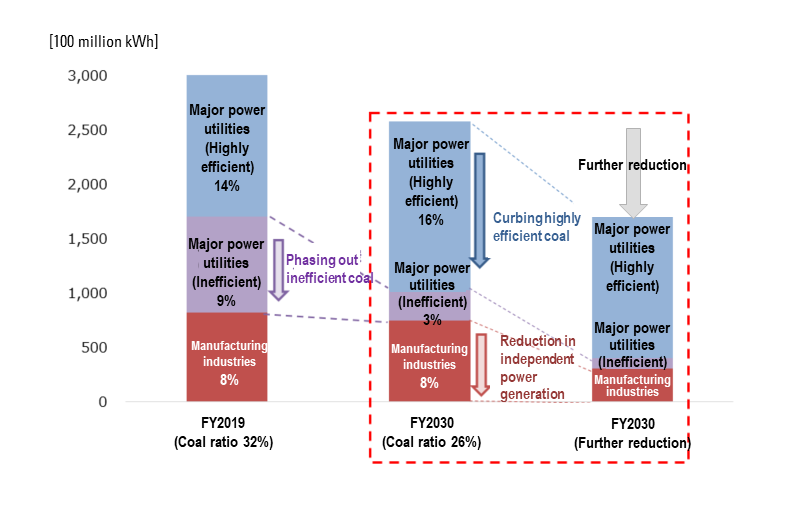
LNG (Liquefied Natural Gas)
While oil and coal are being reduced, there is a likelihood that the ratio of LNG will increase as natural gas emits CO2 approximately half as much as coal does.
However, heavy reliance on LNG causes some problems. Cooling facilities are needed for LNG to be stored. Moreover, extended storage is not possible. In Japan, unlike in Europe and the USA where pipeline gas is distributed at cheaper costs, gas must be liquefied below -162℃. for transportation, incurring extra costs.
Cost comparison of natural gas
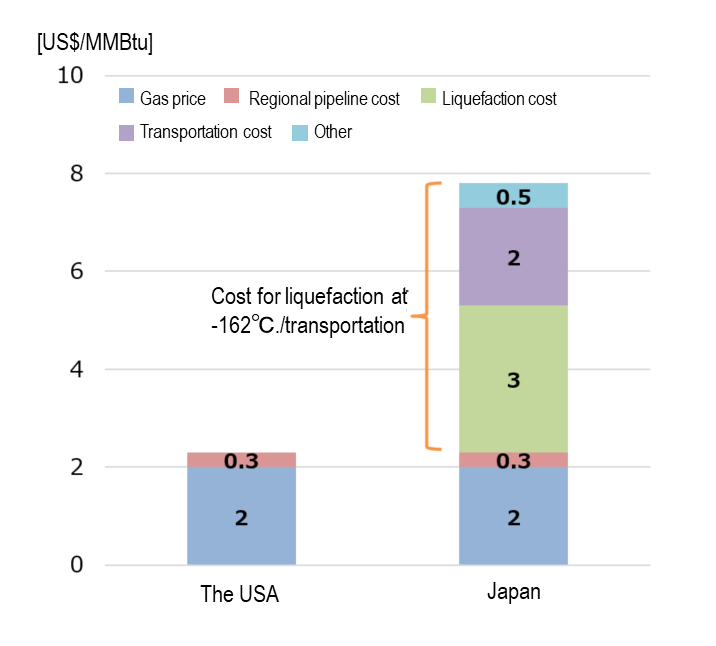
Furthermore, risks are surfacing with procurement difficulties and price hikes as competition with China and India is intensifying in the tightening market. Excessive dependence on LNG would potentially jeopardize a stable supply of energy and economic efficiency.
LNG imports by Japan, China, and India
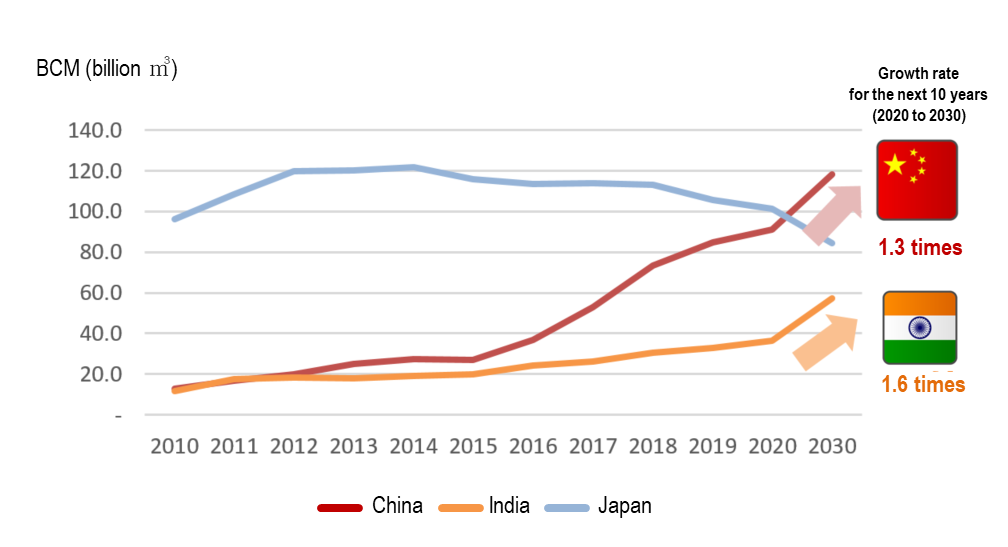
Under such circumstances described above, it is important to build a suitable, well-balanced portfolio based on the 3E principle without overly prioritizing a specific fuel.
Development of new methods of thermal power generation using decarbonized fuels
The basic policy regarding thermal power generation is to reduce its ratio as much as possible on the premise of stability of supply. That being said, achieving a ratio of 19% for coal-fired power in the energy mix in 2030 will be challenging. Toward this goal, we will advance phased shutdowns of inefficient coal-fired power plants while maintaining an adequate portfolio for thermal power.
Toward achieving carbon neutrality by 2050, it is necessary to replace the conventional type of thermal power with decarbonized power sources that can perform similar functions to those of the conventional type. We will advance efforts toward the conversion to generation methods using CO2-free fuels such as ammonia and hydrogen, as well as the utilization of CCUS/Carbon Recycling.
Outline of plans to decarbonize thermal power
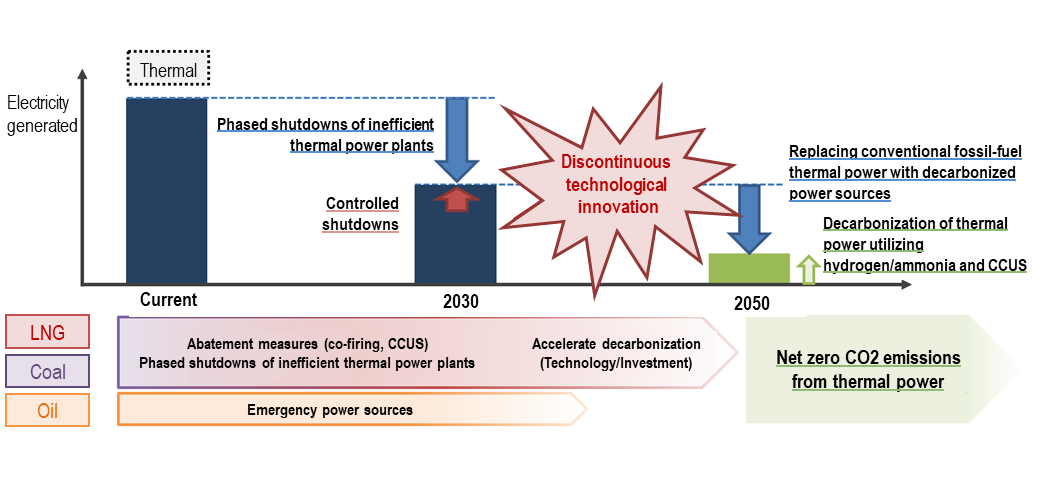
We aim to reduce fossil-fuel-based thermal power generation as well as the ratio of thermal power in the power mix wherever possible by making efforts described in this article.
Division in charge
About the article
Electricity Infrastructure Division, Electricity and Gas Industry Department, ANRE
About Special Contents
Research and Public Relations Office, Commissioner’s Secretariat, ANRE
![]() The original Japanese text of this article; Click here
The original Japanese text of this article; Click here